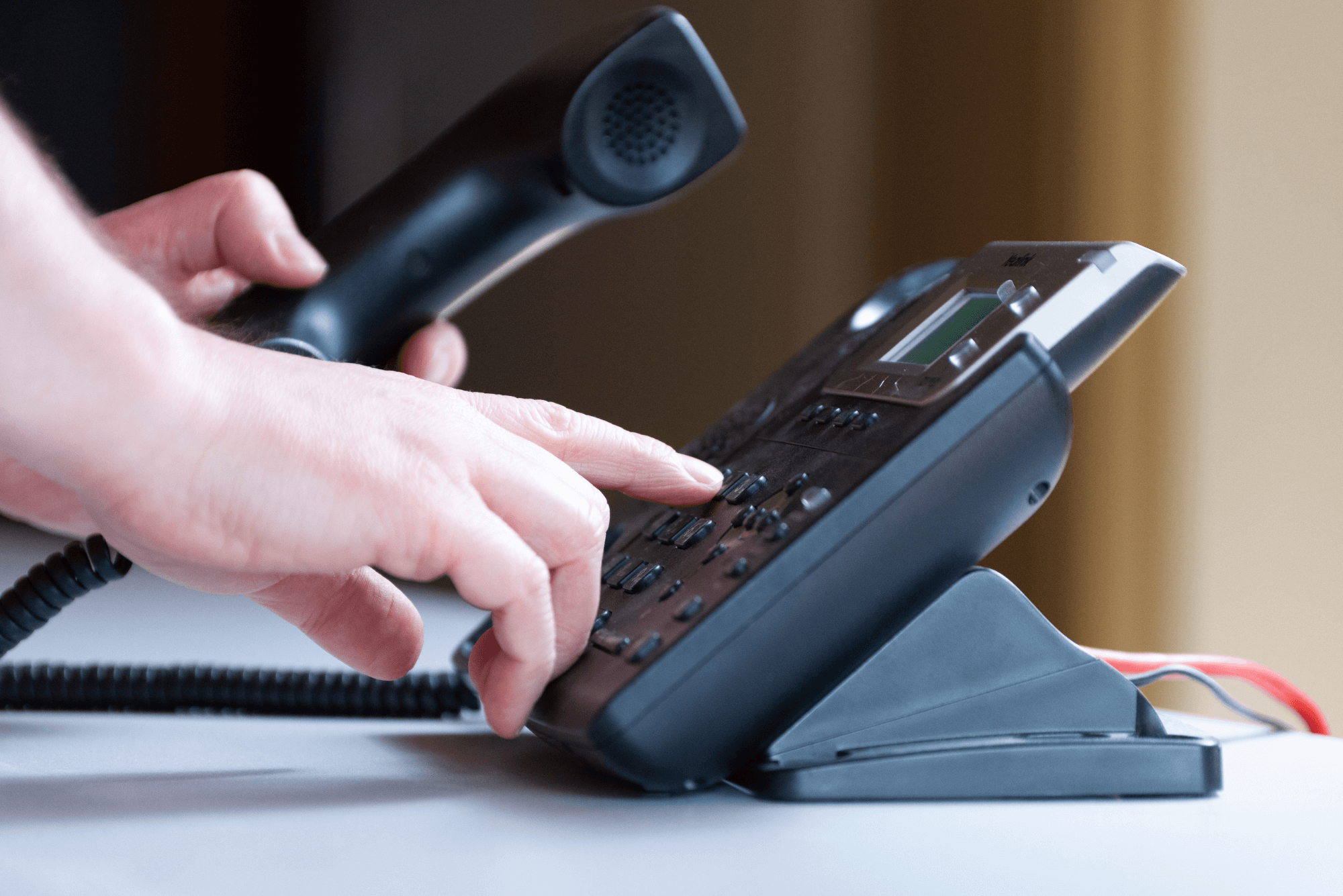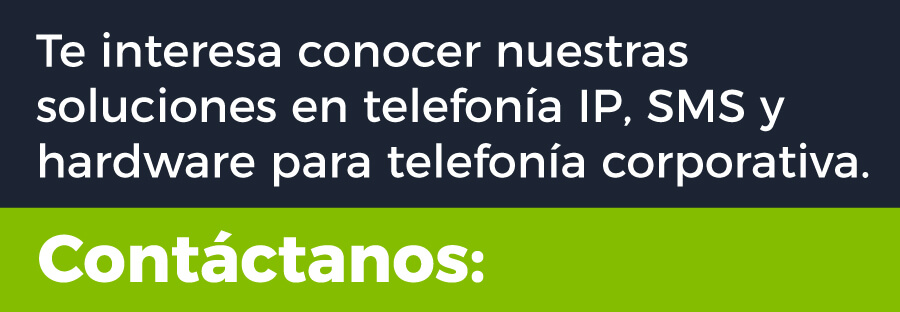We invite you to watch the full webinar in this link.
Our commercial executive accompanies us in this webinar Vanessa Chavarro and our Engineering Manager Jose Franco.
Vanessa: Today we are dealing with a super important topic of strategies and numbering for all companies.
What types of numbering exist?
José: The idea is to have some clear technical concepts first to address them later, many times it is not clear what the difference is between one number and another, we only know that it is a landline number and a cell phone number but nothing more.
On the one hand we have the fixed numbering that we have been accustomed to all our lives, before it was 7 and 8 digits without counting the callsign and now it is 10, we know that in Colombia everything starts with 60, the callsign of the area code and the 7-digit number that we were used to.
We have mobile numbering but we also have another type of numbering that is worth keeping in mind, 01 8000 and 01 900, which are special rate numbering, 01 8000 is the number that is free for the client (end user) but it is reverse charge, that is, the operator would charge us for each minute.
In the case of 01 900, also known as the hot lines at that time that were popular, they are special pricing numbers where I as a company can say how much the minute is worth, I can say no, they pay me a rate of one minute for a local call. or that they pay me 2500 per minute. Those are special numbers.
We also have short numbers, such as those of the police, firefighters, and energy companies, they are numbers that companies can acquire by decree, they go to the CRC and they decree it.
In the case of these numbers 1XY, #XYZ, they are actually numbers that the client does not have in its infrastructure but rather the operator forwards them to a number, either landline or cellular, to the final destination. When the user dials 01 8000, basically I tell the operator that when they dial that number, give it to me at 3215656 or 3401719, and that's how it works.
Vanessa: According to what you mention, they are numbers that entail more costs.
José: Yes, because the operators are going to charge us for each minute at these special rates.
Vanessa: What is the type of technology?
José: There are analog lines, which are the conventional lines that we have had in homes or companies, which have to be quite old technology, in fact a technology that has not changed in the 100 years since it was invented.
It's something we can keep in mind iKono, menus by levels with the number of options that you want to customize according to what each client needs, it is important to clarify that, it is not that they are going to have a level for each service, they can have an option for each one, contracts, after-sales , customer service, etc. all customized in that menu and the second level can also be customized.

Then we have digital lines, which are slightly more robust lines, they were invented more or less in the 70's or 80's, they had the possibility of having up to 30 simultaneous calls, better audio quality compared to analog lines. They are already leaving the market, although there are clients who still have this type of trunks.
We have the lines GSM which are basically the SIM cards that we all have in normal cell phones and then we started talking about the new trunks, the SIP trunks, many of our clients have that are basically telephone lines or trunks that are given to us by the operator in the same way. as the internet delivers to us, they are IP lines.
Finally, we have internet providers, the providers give us the lines, they offer us numbering in Colombia, USA, Mexico, Panama, Peru with certain conditions. Those are the types of technology and types of numbering.
Vanessa: How does number portability work? Many imagine that by having my own number, I am the owner of that number, and I am going to port it to another provider, but then how does that really work, if it is a reality for companies, the issue that concerns us here is that change corporate numbering.
José: Yes, there is a lot of confusion about it, when this news about number portability was published, after that we began to receive requests, I have my fixed number in clear or in you, can I switch to another operator, can I do it?
The answer is yes there is number portability but it depends not for all types of numbering, to begin with number portability for fixed numbers does not exist, because there are technical impossibilities, the CRC cannot require operators to pass this number to another operator, no, no It is so easy, it is really limited to mobile numbering, and it is worth clarifying that it does not apply to all mobile numbering, and that is important because, for example, mobile SIP trunks do not have that portability, when you want a mobile SIP trunk With an operator, the operator has no way of carrying that number that they gave you within those trunks, we can only carry the SIM card.
Number portability is aimed at us conventional users, towards the typical user, rather than the corporate niche. People believe that because this resolution is in place, then the telephone operating companies must keep the number, no, really the operator's obligation is not enough anymore, it is only that commitment with the conventional user or when you have a landline number or a corporate mobile SIP trunk The company is not obliged to make this portability for you, there are some technology restrictions as well.
Link for more information on number portability:

Vanessa: What are the reasons within our experience that lead us to talk about a numbering change or a number conservation strategy?
José: Yes, there is a lot of confusion about it, when this news about number portability was published, after that we began to receive requests, I have my fixed number in clear or in you, can I switch to another operator, can I do it?
Another is the change in technology, I no longer want to work with analog lines for multiple reasons, because they have noise, they intersperse, because they steal the copper and we are left without the lines, because I want to have greater simultaneity, because I want to have better audio quality , caller ID, that is, special services on the lines.
Reduce costs and finally migrate to the Cloud, many times you find alternatives that in order to migrate that technology to the Cloud you have to change your number, it is possible to do so, it is possible to keep it but taking certain precautions.
Vanessa: There are companies that when changing address force them to change technology and therefore the number will be lost, this is a case that we have encountered with some clients.
How do clients, me as a manager or owner of my business make that change without being traumatic?
José: How do we change it without it affecting it?
José: If we want to make a change, the ideal would be to make a detour, that is, if I have a new number, in the case of iKono We had number 3215656, now our number is 3401719, at the time we did that, we said, I wish we could make a detour. That is, if I am in Une and I am going to change from one sector to another and the operator tells me I do not have coverage and how to transfer that number, the ideal would be that they at least make a detour for us. If they can't put a detour on you, we'll see what we can do. The issue is that here our clients believe that the operator is obliged to play an audio, we would believe so, but the operators do not report numbers of other operators, and they can do so by not wanting to participate in disclosing a competitor's number, they can do it.
Additionally, the idea is to disseminate the new number before the portability is made, publish it on social networks, the email signature, on Google My Business, on the website, in print, update it everywhere because it takes a while. .

Already in the second part, it is very important to make a strategy of informative audioIf I am going to change provider, change number, it is important not to make a break where I have one number until a certain moment and then the other, no, we have to have both numbers simultaneously, give continuity to the old number and only cut it when I already know that it will not affect my business, if it is possible to have the participation of the operator, if I have a migration, change of number within the same operator, the operator is going to place the audio for me, and may say that for 3 months you put it, but if I need more months, we must do the audio strategy ourselves.
First you have to acquire the new number, nobody knows it, all the calls are entering the old number, when they enter the old number, what we do is tell them that from that date our new number will be that, we are just informing that we are going to change the number. After that, when the date has passed, we continue informing, remember that since that date our number has changed, and allow entry.
We remind you that to see the complete information of our webinar, access here.
#We invite you to read our blog post “What is a customer journey?”
Learn about our Corporate Solutions
Learn about the lines of solutions in IP telephony, multi-agent chat, massive text and voice messaging for your company.
Know



